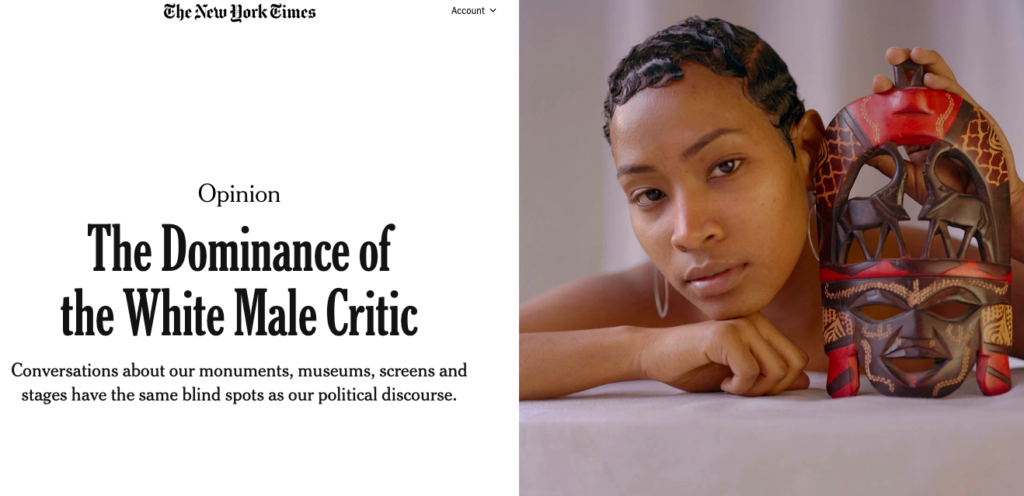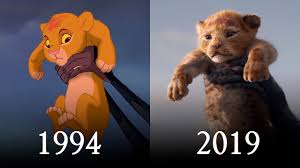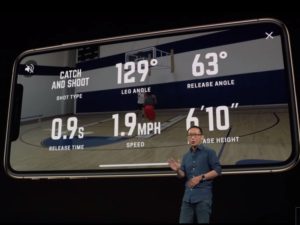
Elizabeth Méndez Berry (a director at the Nathan Cummings Foundation) and Chi-hui Yang (a program officer at the Ford Foundation) wrote a great Op-Ed for the NYT on July 5th about the need for more diversity among critics, cultural writers, editors (and assigning editors) in the arts and cultural sphere. The entire piece is required reading, but these two paragraphs sum it up for me:
This matters because culture is a battleground where some narratives win and others lose. Whether we believe someone should be locked in a cage or not is shaped by the stories we absorb about one another, and whether they’re disrupted or not. At a time when inequality and white supremacy are soaring, collective opinion is born at monuments, museums, screens and stages — well before it’s confirmed at the ballot box.
Yet those who have for decades been given the biggest platforms to interpret culture are white men. This means that the spaces in media where national mythologies are articulated, debated and affirmed are still largely segregated. The conversation about our collective imagination has the same blind spots as our political discourse.
I agree completely and I’m glad they’ve brought this discussion to a wider audience, and enlarged it beyond the usual conversation about the need for greater diversity in stories and storytellers. And its no criticism of the article to say the conversation needs to be broader still – as I’ve mentioned many times before here, in film alone, the ranks of film festival programmers and directors, arthouse theater owners and programmers, bookers, critics, acquisition executives and other decision makers are far too white and male. There are notable exceptions, but they remain exceptional examples.
As I’ve written before, many diverse filmmakers don’t even submit their works to certain premiere film festivals because they don’t feel those fests are “for” them. I know this is true, because many such emerging filmmakers have told me this. And I’ve seen numerous great films that have had a hard time getting accepted to these same fests because they don’t fit the taste profile of many of these programmers. They are then passed by (or never noticed) by acquisitions execs with the same taste profile. And if they do get their film distributed, they then face a crop of critics who may not be as in tune with their work. This isn’t only a problem for Diverse filmmakers/stories (and art), but for diversity (small d) of cultural style – there’s a sameness in what fest programmers like and critics like that leads to less diverse styles of storytelling as well.
Anyway, while the Op-Ed has been making the rounds and was in the NYT, go read it now if you haven’t. On to this week’s news.
Stuff I’m Reading: Film
I recently joined Josh Hyde on his American Filmmaker podcast to discuss indie film, branded content and a few other subjects. If you’re interested, you can check it out here.
Will Chicken Soup for the Soul be the winner of the streaming wars? Holman Jenkins of the WSJ makes a good argument on its behalf, and while I don’t always agree with this writer (and almost never with this paper’s politics), he makes a good case. The company has a relatively new owner, Bill Rouhana, who used to run Winstar, and he bought the brand for the name – because brands matter online for curation, and this one “says ‘nice’;” and then he bought a big stake in Crackle from Sony. Oh, and he also got Popcornflix, and its 24 million app users in his deal.
He plans to use the ad-supported service to clean-up in the coming streaming wars. And I’ll give Rouhana this – he gives a good quote to sum up the future: “The streaming war is going to be amazing,” he tells (Jenkins) “I can’t imagine how much money is going to be destroyed.”
That is true, and Rouhana’s bet that people will turn to free, ad-supported streaming (FAST) is already panning out as consumers get tired of paying for multiple SVOD services. And he may do a better job curating and helping you find what you want, because as Jenkins points out: “He and his advertisers have a reason to care if somebody is really watching.”
I always say that people need to focus more on curation. Well, both POV and Criterion are doing that pretty well in their email newsletters. Here’s POV’s from this week and here’s one from Criterion. Figured I should praise as well as complain!
Quibi’s line-up and mandate is becoming clearer, and the Hollywood Reporter has a comprehensive run-down of the execs and the shows:
AMC Theatres Launches Venture to Promote Small and Mid-Size Films – AMC is trying a new system to promote small to mid-sized films and give them more marketing, more time in the theater, and maybe a chance at finding an audience. They’ve tried this in the past, but maybe this time will work better?
Should journalists – and doc filmmakers – tone down the rhetoric and step outside the echo chamber in their reporting on climate catastrophe? Yes, argues Matthew Nisbit in a piece for Issues in Science & Technology reporting on the new Covering Climate Now initiative. It’s a good piece, and I think anyone covering climate in their work, especially filmmakers, should take it to heart. While his focus is on journalism, his points remain relevant to doc films – mainly that scaring people and doomsday scenarios aren’t necessarily helping things and we need more rigorous debate. He argues we need critically oriented science reporting … to help maintain public faith in climate science and journalism.
How Darren Aronofsky and astronauts are taking on the environmental crisis – Both Arononofsky and David De Rothschild, a notable environmentalist, are pushing for less negative activist films, and more positive “As environmentalists, we’re undertakers of the wilderness,” de Rothschild says. “We tell you all the bad news. And bad news creates fear. And fear often creates paralysis.”
For HBO Max, streaming technology is anything but a commodity – the decision to leave Disney owned Bamtech and provide its own streaming technology has proven fruitful for HBO, having premiered the final season of Game of Thrones, without any major issues. Now, called HBO Max, they’re ready for prime time.

The dead-eyed new Lion King painfully illustrates the difference between cinema and video games – AV Club runs down all of the problems w/ the making of this movie. I haven’t seen it, but we all know these movies have been huge moneymakers for Disney and one of the seemingly surest bets at the box office. Let’s see whether audiences respond.
Stuff I’m Reading: Branded Content
I am teaching a short class on branded content at NYFA in Dumbo, Brooklyn on July 25th. Find all the details and register here.
Will more brands invest equity in feature films? Rick Parkhill of BrandStorytelling covers the story of Johnson & Johnson with 5B, and speculates that more brands may move into this space. Having a couple of clients who are already doing this, I suspect we’ll see even more of it.

Netflix’s ‘Stranger Things’ is dangerously close to becoming ‘Sponsored Things’ How much ‘New Coke’ and ‘Burger King’ did you spot?
Learn What YETI’s Head of Content Looks for in a Film– Among other things, he suggests concentrating on finding a good character, and then, make sure they “personify the brand.” I’ve worked with Scott and Yeti, and think they’re making good films, so check out his advice.
Cosmopolitan is launching a branded podcast with Tinder –
“Historically, branded podcasts have been a pricey purchase with real distribution challenges. While there have been success stories, such as GE’s “The Message,” or, more recently, a companion podcast to the HBO miniseries “Chernobyl,” which averaged 1 million downloads per episode, branded podcasts are typically not used to reach a large audience.
But as the podcast audience continues to grow, and as more legacy media companies get involved in the space, some may hope to leverage their reach to drive more scale than previously possible. “It’s a good option for certain companies,” said Steve Pratt, the founder of Pacific Content, a podcast agency that was acquired in May by the Canadian broadcaster Rogers Media. “For [brands] that want big reach or a mass audience, partnering with a media company makes sense.”
Verizon Media introduces media to branded content arm with immersive experience “In the fight for attention, brands need to become smarter in the way they craft their stories. By putting on a ‘show’ instead of a ‘tell’, we showed firsthand just how RYOT Studio is revolutionising the way content is created, communicated and distributed.”
The only magic of content is that it makes your brand disappear – moral of the story: great storytelling will lead to effective ads. No need for gimmicks.
Stuff I’m Reading: AR/VR/AI/ETC
The Pentagon Wants VR To Train for Nuclear War – scary, but another useful (but hopefully won’t be needed) application of VR
Using virtual reality could make you a better person – on a more positive note, maybe VR can help us become people who wouldn’t use nuclear weapons on each other.

The NBA just invested in this hot AI startup to train and find its next crop of global superstars – the NBA has developed an app that not only utilizes AI to evaluate basketball skill, but also create an online community of like minded people sharing a hobby.
“One of the most powerful things that we’ll see from this app is the community and the ability to have a platform that shares all the talent that’s out there connecting all those people, countries, and cultures.”
Offset, DJ Khaled, Russell Westbrook, and the brave new world of celebrity digital avatars – brands are starting to create celebrity avatars to help promote their products. One of the questions being raised is who ultimately will own these avatars, and how many will everyone have?
An Indonesian University Is Accepting YouTubers And Exempting Them From Entrance Exams – at first glance, seems like they’re pandering toward the younger generation. But they’re doing something similar to Colombia and their Orange economy, which is to help foster creative content to help bolster GDP.
Before VidCon, Facebook Tweaks Monetization Options for Content Creators – Facebook has launched some new features for content creators, and I like one of them a lot – fans can now buy bundles of “stars” to give to their favorite creators, who then accumulate real money and esteem. Note: As I was writing this, Youtube announced a similar program called “Super Stickers” at VidCon as well.
Social tagging: branded content > Diversity > Netflix > NYT > Quibi > WSJ